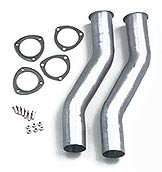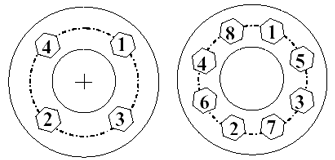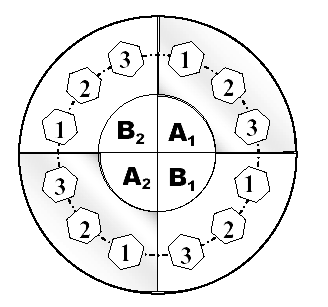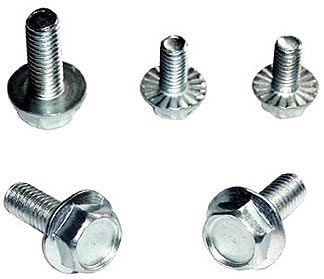| Materials Used |
The suction and discharge pipe connections must be carefully made so as to prevent putting excess stress on either the piping or pump flanges. Incorrect joints lead to problems like leak, creating unplanned down time. As such, fasteners must be the correct grade for the application. Flange bolts are used in such circumstances.
Flange bolts are those type of bolts having a ridge or skirt around the bolt head. They are also know as frame bolts and are designed to provide the holding power as if a washer was installed. The skirt is the distributing agent of the entire clamping load. Pipe flange bolts are widely used in various applications, especially pipe fittings and plumbing. With their multi-feature function, they help make jobs easier and faster. Pipe flange bolts are made from a variety of types and grades to suffice for the various applications flange bolts are used.



 There
should be a sufficient number of steps to bring the flanges together and
achieve the torque required by the gasket. Four and eight pipe bolt
flanges are tightened in a cross manner. For large flanges with 12 or
more fasteners, it is suggested that two workers tighten the bolts at
the same time, working 180 degree apart. Each worker tightens bolt
number one in quadrant A, then bolt number one in quadrant B, then move
to bolt number two. This process is repeated till the required torque is
achieved on all the fasteners. Thus, pipe flange bolts reduces excess
localized loading on the flange components and gasket.
There
should be a sufficient number of steps to bring the flanges together and
achieve the torque required by the gasket. Four and eight pipe bolt
flanges are tightened in a cross manner. For large flanges with 12 or
more fasteners, it is suggested that two workers tighten the bolts at
the same time, working 180 degree apart. Each worker tightens bolt
number one in quadrant A, then bolt number one in quadrant B, then move
to bolt number two. This process is repeated till the required torque is
achieved on all the fasteners. Thus, pipe flange bolts reduces excess
localized loading on the flange components and gasket.